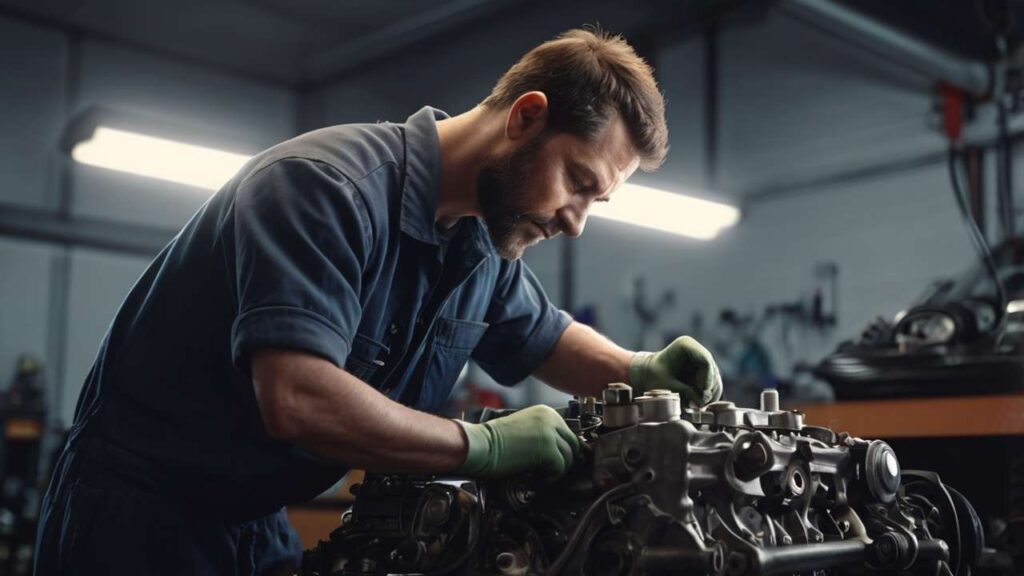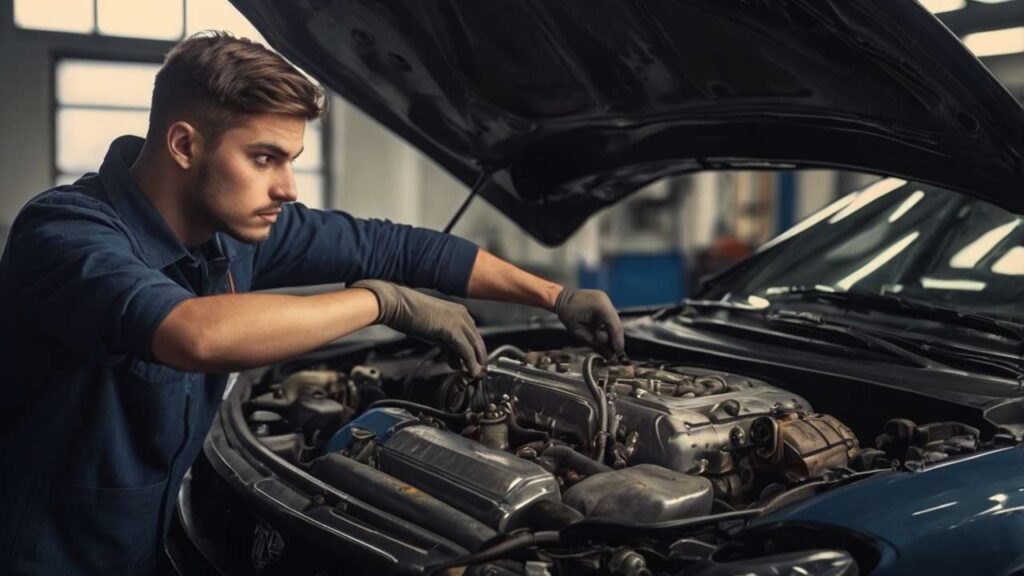Facing engine trouble is one of the most stressful things for any driver. The repair itself is hard enough, but the real dilemma often shows up at the parts counter: Should you choose OEM, aftermarket, or reconditioned engine components? It may sound simple, but the decision directly affects your engine repair cost, the reliability of your vehicle, and even the warranty coverage you’ll get.
In my opinion, this is the moment where trust in a professional and expert auto service becomes priceless. I’ve seen people try to cut corners by using the cheapest parts available, only to come back months later with the same issue, sometimes worse. Others stick strictly with OEM (Original Equipment Manufacturer) parts because it feels safe, even if it’s pricey. Then there’s the middle ground—reconditioned components—that can be a lifesaver if you’re rebuilding an engine on a budget. Each path has its risks and rewards, and that’s why this dilemma deserves a closer look.
- OEM Parts: The Comfort of Familiarity
- Aftermarket Parts: The Double-Edged Sword
- Reconditioned Components: The Balanced Choice
- The Real Cost of Engine Repair
- Engine Warning Signs Every Driver Must Recognize
- Diagnostic Tools and the Check Engine Light
- Maintenance vs. Breakdown: The Financial Case
- A Case Study: Choosing the Right Path
- Expanding the Conversation Beyond Repairs
- FAQs
OEM Parts: The Comfort of Familiarity
OEM parts are basically the gold standard. They come directly from the vehicle manufacturer, designed and tested specifically for your car’s make and model. They fit perfectly, and most of the time, they carry a solid warranty.
But here’s the catch—they’re expensive. A rebuilt transmission might cost $1,200 in aftermarket form, while the OEM version could easily top $2,000. According to John Keller, a trusted engine repair specialist, “OEM guarantees peace of mind, but you’re paying heavily for the logo stamped on the box.”
From my perspective, OEM makes sense if the car is relatively new, still under warranty, or if you rely on it daily for work. Spending more upfront sometimes means fewer headaches later.
Aftermarket Parts: The Double-Edged Sword
The aftermarket parts industry is massive. In fact, the global auto parts market is projected to keep expanding as more drivers look for cheaper alternatives to OEM. Aftermarket parts are built by third-party manufacturers, and quality varies widely. Some are as good—or even better—than OEM, while others feel flimsy right out of the box.
A friend once replaced his Honda’s alternator with a budget aftermarket option. It worked fine for six months, then failed during a road trip. The replacement OEM alternator he installed afterward is still running strong three years later. That’s the risk: aftermarket can save you money, but it can also cost you downtime.
The best advice I can give is to buy from reputable brands with proven track records. Trusted aftermarket manufacturers often use the same materials and testing standards as OEM, just without the inflated price.
Reconditioned Components: The Balanced Choice
Reconditioned or remanufactured engine components are a bit of a hidden gem. These are used parts that have been rebuilt, tested, and restored to factory specs. Think of them as recycled, but reliable. For major repairs like an engine rebuild, reconditioned components can cut costs in half without sacrificing too much performance.
Of course, not all reconditioned parts are equal. Some shops cut corners, while others follow strict industry standards. According to industry reports, reconditioned components often come with a warranty, which makes them far more trustworthy than junkyard finds.
For anyone balancing a tight budget with the need for quality, reconditioned parts often provide the best value for engine rebuilds.
The Real Cost of Engine Repair
Engine repair costs vary dramatically depending on which parts you choose. OEM parts push the bill higher but often include better warranty coverage. Aftermarket parts lower upfront costs but might compromise longevity. Reconditioned parts sit in the middle, offering affordability with reliability—if sourced from a trusted provider.
In my experience, the real cost isn’t just money. It’s also time. Having your car stuck in a shop for an extra week because of poor parts can be more painful than paying a few hundred dollars extra for quality. Reliable auto service shops usually guide you honestly through these decisions, explaining not just the price but the long-term value.
For drivers in North Carolina, a good starting point is here: Top-Notch Engine Repair Specialists in North Carolina.
Engine Warning Signs Every Driver Must Recognize
Before parts even come into play, most drivers ignore early warning signs: knocking noises, loss of power, oil leaks, or the dreaded check engine light. These little alarms are your car begging for attention.
A mechanic once told me, “Most blown engines could have been saved if the owner had listened earlier.” That hit home. Addressing small issues early with reliable engine service is always cheaper than waiting until a breakdown forces you into a full rebuild.
Diagnostic Tools and the Check Engine Light
Decoding the check engine light isn’t about guesswork anymore. Modern shops use advanced OBD-II scanners that read error codes, pinpoint failing sensors, and even test real-time performance. This diagnostic step helps identify whether an issue requires a simple sensor swap or a major engine tear-down.
I still remember the first time my mechanic plugged in one of these scanners and told me my car’s misfire was just a $40 spark plug issue. Without those tools, I’d probably have been convinced to pay for a new coil pack. That’s the power of essential diagnostic tools—they save drivers from unnecessary repairs.
Maintenance vs. Breakdown: The Financial Case
It sounds boring, but regular maintenance—oil changes, coolant flushes, timing belt replacements—beats the cost of a sudden breakdown every time. Preventive care doesn’t just extend engine life; it keeps the cost of ownership predictable.
Skipping maintenance is like gambling. You might save $150 today, but one overheated engine later, you’re looking at $3,000 in repairs. That’s why consistent care, supported by trusted specialists, remains the smarter financial choice.
A Case Study: Choosing the Right Path
One customer at a Raleigh repair shop faced a failing engine block. The OEM replacement was quoted at $5,000, aftermarket at $3,200, and a reconditioned option at $2,600 with a 1-year warranty. He chose the reconditioned block. Two years later, the car still runs daily with no issues.
That’s a perfect example of how choosing between OEM, aftermarket, and reconditioned isn’t always black and white. It depends on budget, vehicle age, and how much risk you’re willing to take.
Expanding the Conversation Beyond Repairs
Engine repair is a big topic, and there’s so much more that can help drivers. For example, understanding how eco-friendly reconditioning practices reduce waste is becoming important in the global market. Another future discussion worth exploring is the impact of counterfeit engine parts—a real problem in online marketplaces. There’s also the role of electric vehicle (EV) engine maintenance, which flips the script entirely since EVs don’t use traditional combustion engines.
All of these expand the conversation and remind us that the spare parts dilemma is just one piece of a much bigger picture in automotive care. For more insights, explore Pro Service Tips or dive into our full category on engine repair.
FAQs
1. Are reconditioned engine parts as reliable as OEM?
Yes, if they’re sourced from a trusted provider. Many reconditioned components meet the same standards as OEM, but always check the warranty before buying.
2. Do aftermarket parts void vehicle warranties?
Not always. As long as the part meets manufacturer specifications and is installed properly, your warranty typically remains valid. But confirm with your dealership first.
3. Which option is best for an engine rebuild—OEM, aftermarket, or reconditioned?
For long-term peace of mind, OEM is best. For affordability without too much compromise, reconditioned is a strong choice. Aftermarket can work if you buy from a reliable brand.
The **spare parts dilemma—choosing between OEM, aftermarket, and reconditioned for engine repair—**isn’t just about saving money. It’s about balancing trust, reliability, and long-term value. A poor choice today can haunt you tomorrow, while the right one can give your car years of extra life.
If this article gave you clarity, don’t keep it to yourself. Share it with fellow drivers by using the share buttons below—because every car owner deserves to know their options before the next repair bill lands on their desk.


